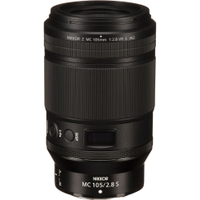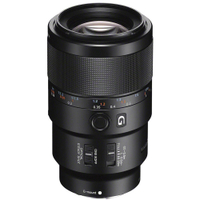Digital Camera World Verdict
I’ve got a soft spot for the Tamron 90mm F2.8 Di III Macro VXD, not that there’s anything soft about its razor-sharp image quality. At the tail end of the last century, a Tamron 90mm was my first ever macro lens and this one is a worthy successor for mirrorless cameras, again delivering excellent performance at a reasonable selling price. For extreme close-ups with full 1.0x magnification and an eye on the budget, it’s hard to beat.
Pros
- +
Excellent image quality
- +
Lovely bokeh
- +
Not just for extreme close-ups
- +
Tough weather-sealed build
Cons
- -
No optical stabilization
- -
Limited mount options
Why you can trust Digital Camera World
Tamron has been making somewhat legendary 90mm macro lenses for 45 years and counting, starting off in 1979. The notable Tamron SP AF 90mm f/2.8 Di 1:1 for both 35mm film and digital Canon, Nikon, Pentax and Sony SLRs was launched in 1997 and became an instant hit, picking up a Lens of the Year award in Europe. Other versions followed, culminating in the Tamron SP 90mm f/2.8 Di VC USD which boasted internal focusing and ‘hybrid’ optical image stabilization. This compensates for horizontal and vertical shift as well as for the more usual angular vibration, making it particularly effective for extreme close-up shooting. Even so, Tamron’s highly respected line of macro lenses for DSLRs were all discontinued a while ago and, after quite a wait, the Tamron 90mm F2.8 Di III Macro VXD for mirrorless Nikon Z and Sony E mount was finally announced in September 2024. Following in a rich Tamron tradition, it aims to be one of the best macro lenses that money can buy.
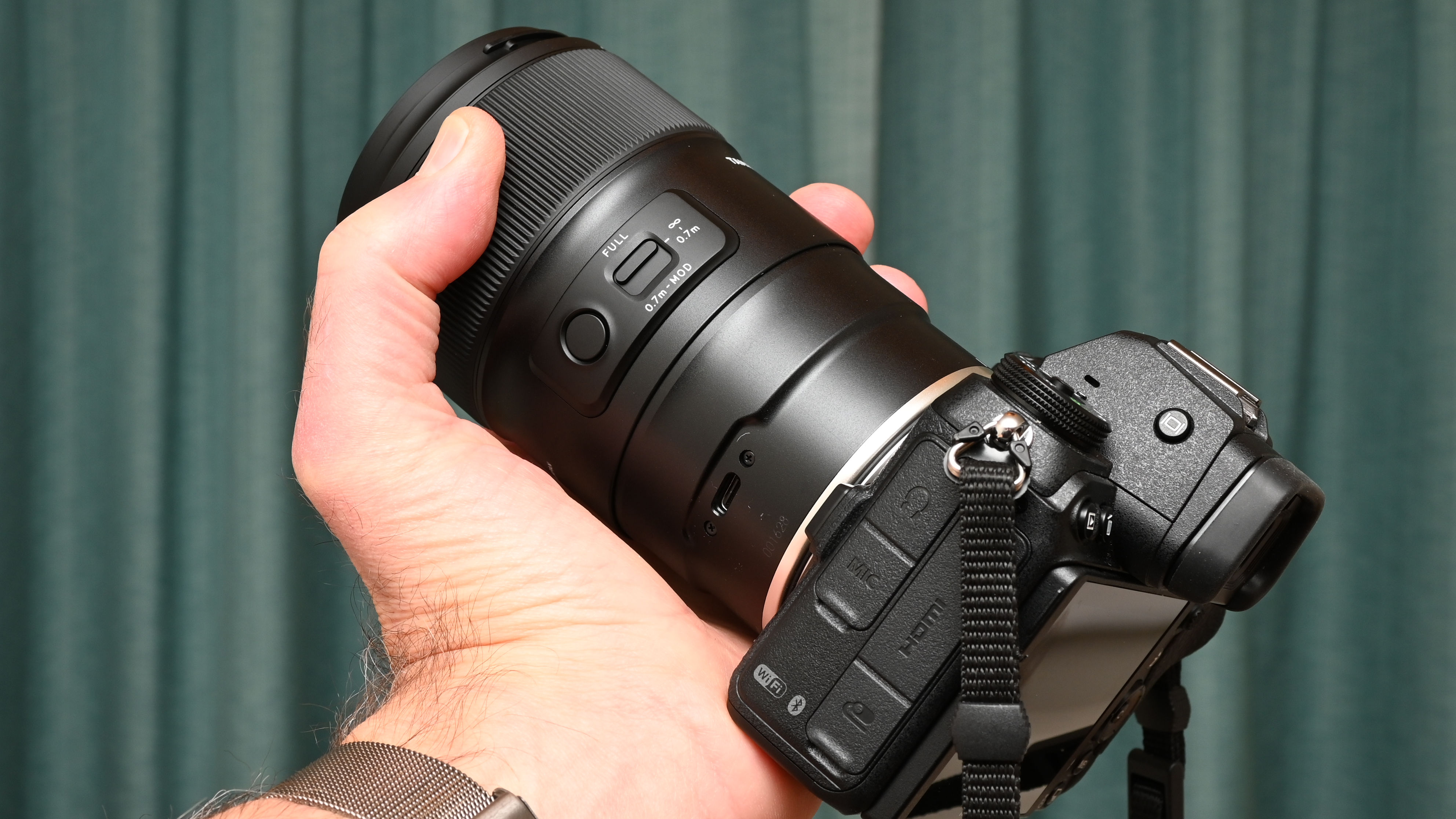
Tamron 90mm F2.8 Di III Macro VXD: Specifications
| Mount options | Nikon Z (FX), Sony E (FE) |
| Lens construction | 15 elements in 12 groups |
| Angle of view | 27 degrees |
| Diaphragm blades | 12 |
| Minimum aperture | f/16 |
| Minimum focus distance | 0.23m |
| Maximum magnification | 1.0x |
| Filter size | 67mm |
| Dimensions | 79x127mm |
| Weight | 630g (E), 640g (Z) |
Tamron 90mm F2.8 Di III Macro VXD: Price
The Tamron 90mm F2.8 Di III Macro VXD came to the market in the fall of 2024, with a price tag of $699/£599. That’s pretty much on a par with lenses like the Laowa 100mm f/2.8 2x Ultra Macro APO at $499/£569 (in Europe at least) which offers 2.0x maximum macro magnification but is a fully manual lens with no autofocus nor any electronics for communication with the host camera body. For a more direct comparison, the Tamron significantly undercuts the prices of own-brand camera manufacturers’ macro lenses including the Nikon Z MC 105mm f/2.8 VR S at $847/£799 and the Sony FE 90mm f/2.8 Macro G OSS at $998/£819. The Nikon lens was substantially discounted from its list price of $1047/£1049 at the time of writing this review.
Tamron 90mm F2.8 Di III Macro VXD: Design & Handling
Like Tamron’s later versions of its 90mm macro lenses for DSLRs, the new 90mm F2.8 Di III Macro VXD for mirrorless cameras has an internal focus mechanism. As such it retains its relatively compact physical length of about 5 inches, rather than extending at shorter focus distances. That’s an important factor as far as I’m concerned, with the bonus that it doesn’t eat into your working distance for macro shooting. Autofocus itself is driven by a VXD (Voicecoil eXtreme Drive) motor, which is rapid for general shooting as well as being virtually silent. For ultra-precise macro shooting, there’s the usual slowdown in autofocus speed, to ensure optimum accuracy.
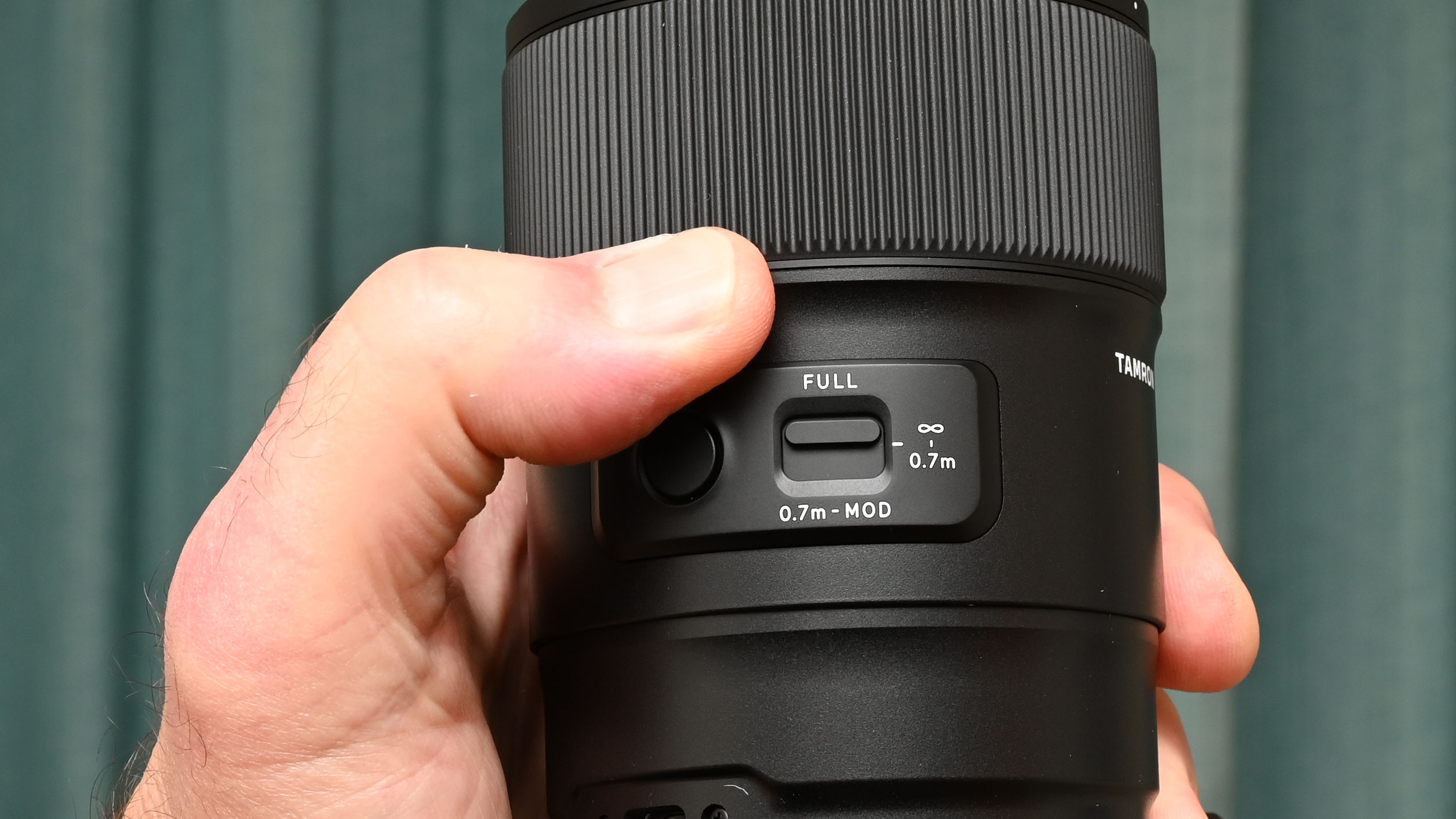
Typical of modern macro lenses, the Tamron certainly isn’t a one-trick pony. Not just for extreme close-ups, it also aims to be ideal for portraiture, still life photography and for any other time you need a fairly fast short telephoto lens for anything from sports and wildlife to landscape shooting. With that in mind, there’s a 3-pole autofocus range limiter switch that can put the whole range at your disposal or lock out either the short or long end. The latter two options can speed up autofocus in tricky shooting conditions, avoiding the need for the lens to hunt through its entire distance range.
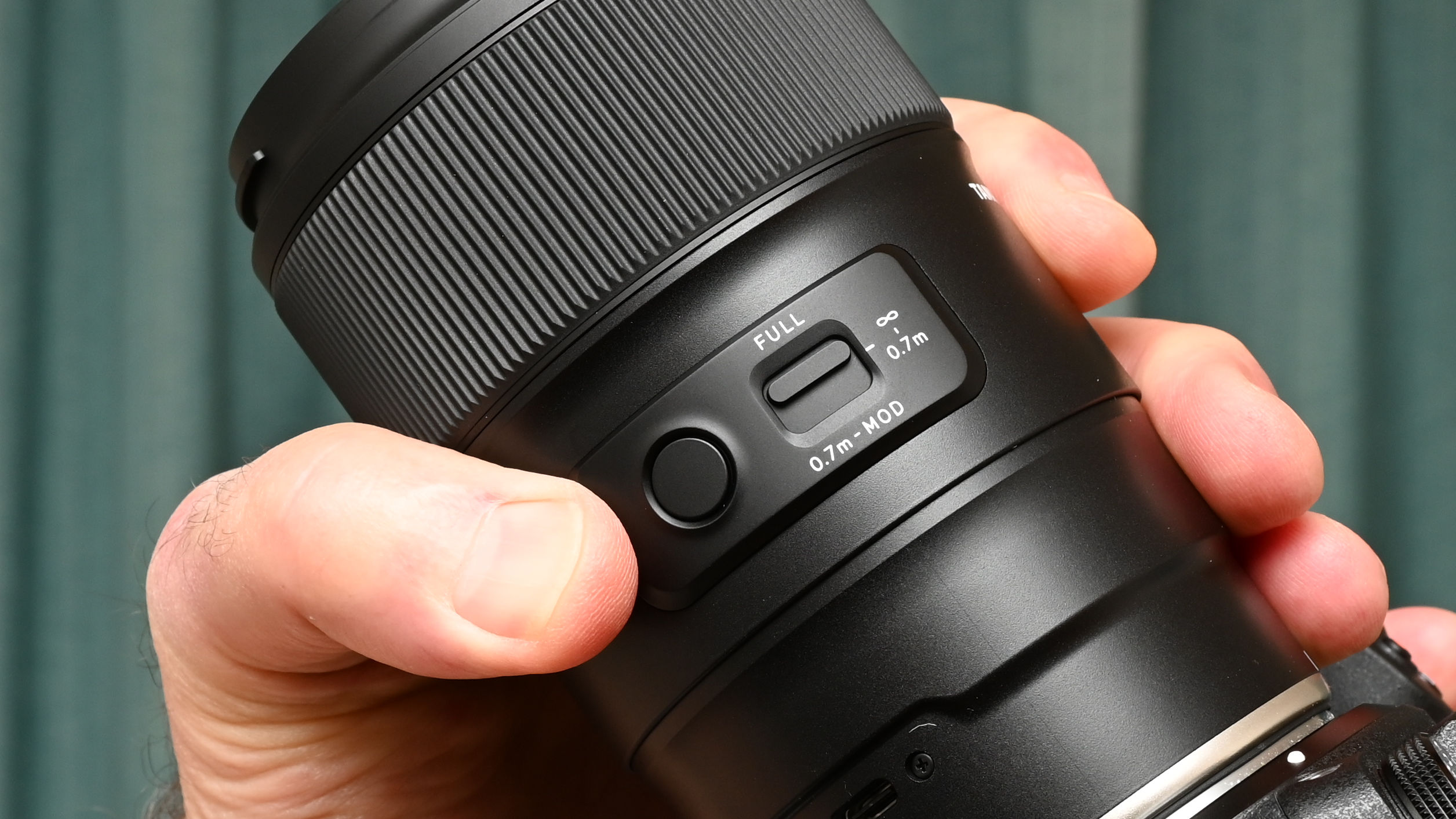
Just next to autofocus range limiter switch is a customizable function button. You can generally choose between various options for its action in your camera’s menu system, AF-on, AF-hold and AE-lock being among the usual preferences. In fact, locking the exposure value can often come in useful. For adjusting exposure settings, the lens has no aperture control ring, which is often preferred for shooting video. What you do get is Tamron’s first ever 12-blade aperture diaphragm, which helps to maintain a particularly well-rounded iris when stopping down from the widest aperture of f/2.8.
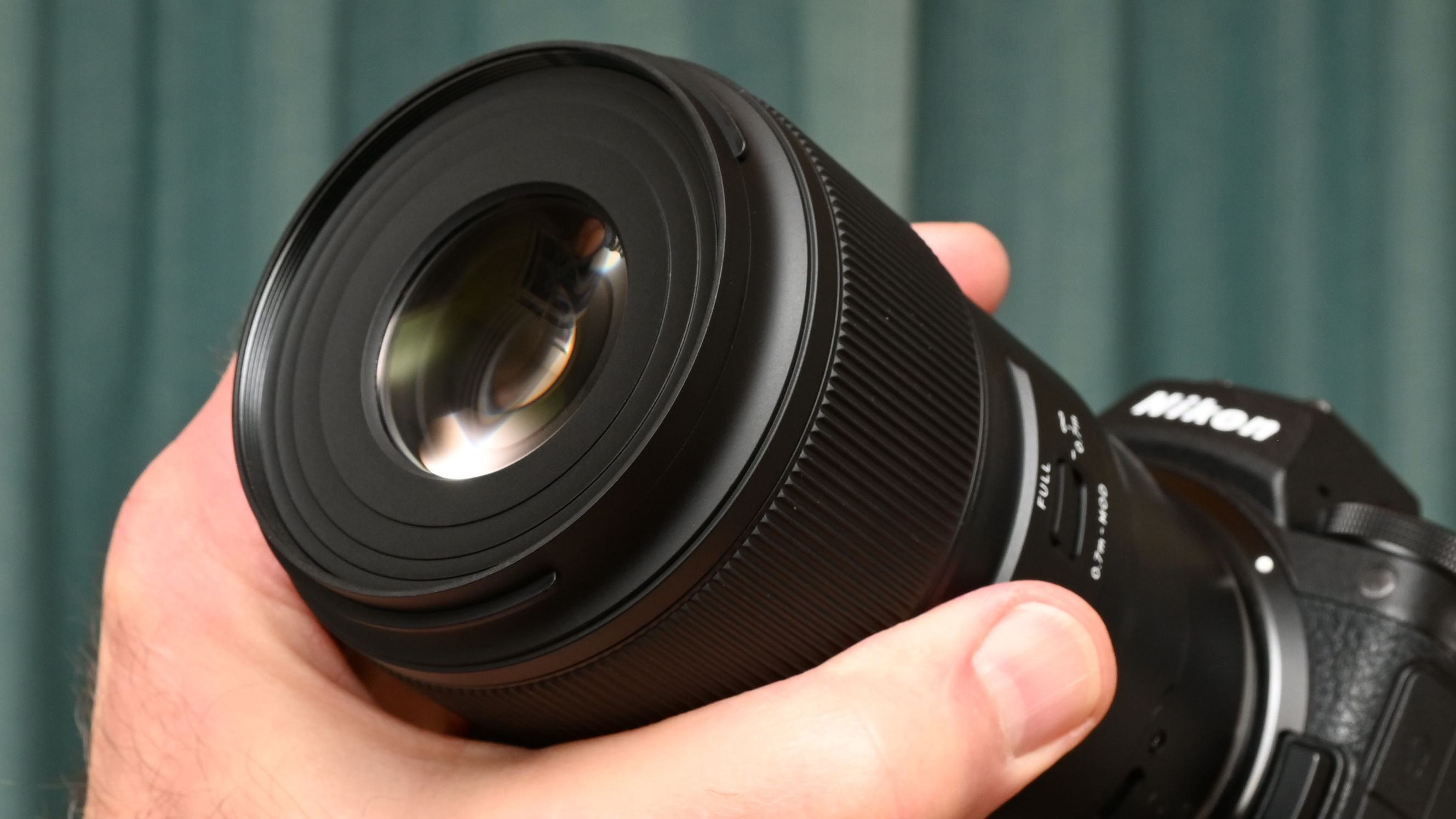
Let’s talk glass. The lens has 15 elements arranged in 12 groups, and includes four LD (Low Dispersion) elements to enhance clarity and color reproduction while minimizing color fringing. As a macro lens, the optical design also aims for ‘flat field’ performance, without any noticeable field curvature. That can be an important consideration when shooting the likes of coins or stamps head-on, so that optimum sharpness is maintained across the image frame.
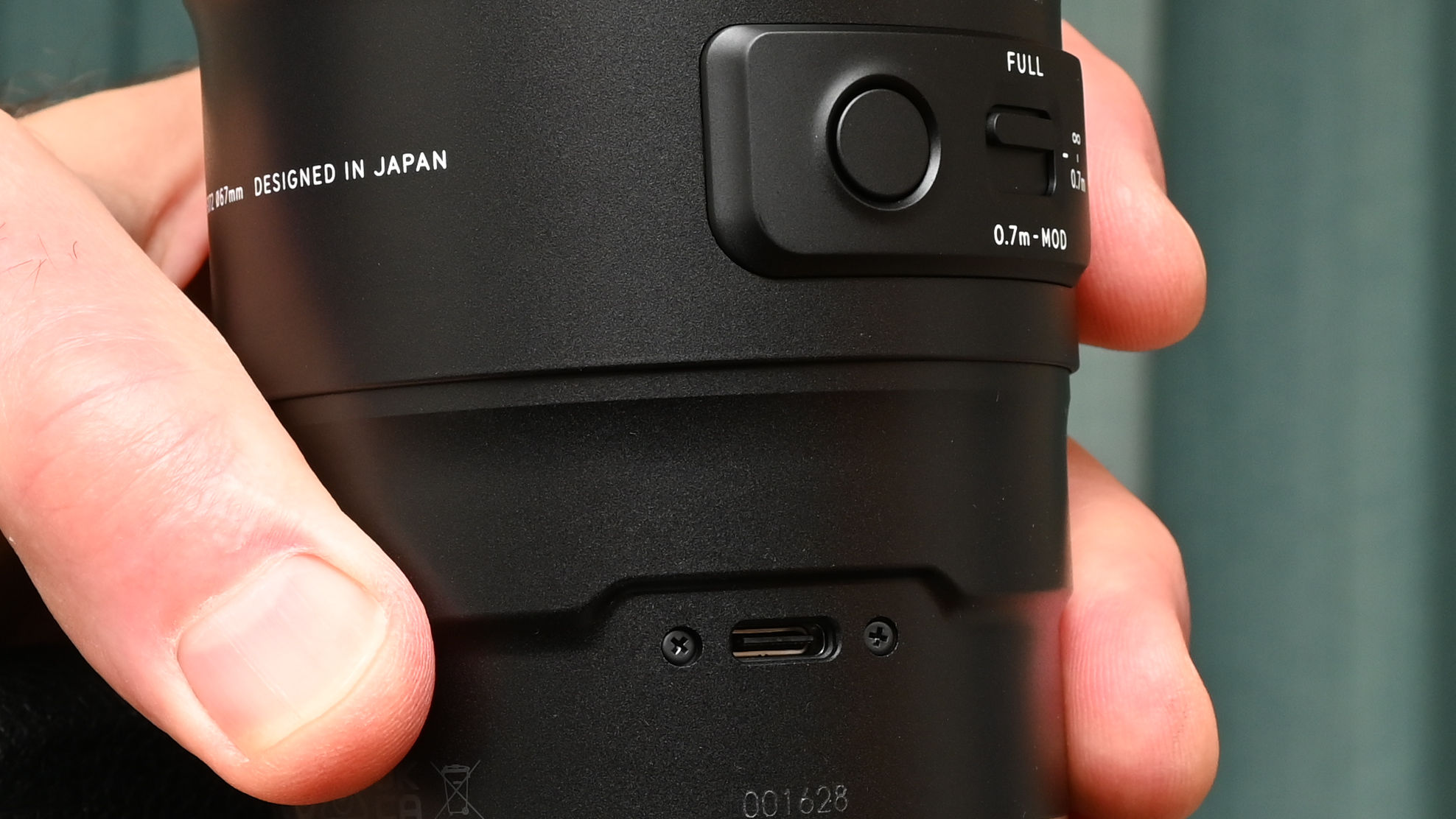
As with other recent Tamron lenses, a USB-C port is featured towards the rear of the barrel. This enables you to hook up the lens to the Tamron Lens Utility tool, a free-of-charge download for Windows PCs, Apple computers and as an Android app. You can then customize the functionality of the lens and apply firmware updates, if and when required.
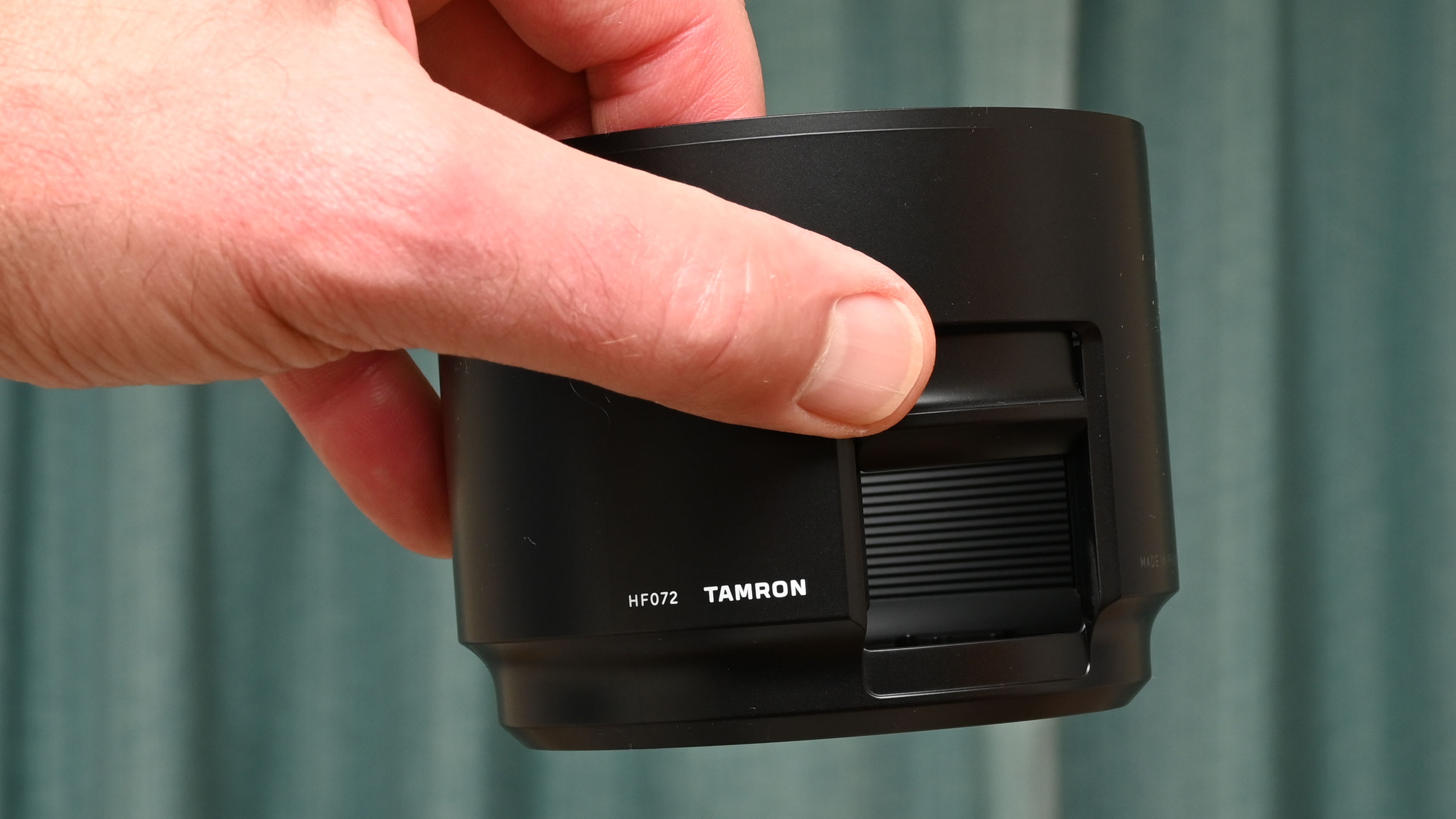
Tamron 90mm F2.8 Di III Macro VXD: Performance
I tested the Z-mount version of the lens on my Nikon Z 6II body. The VXD autofocus system is fast and snappy for general shooting. It’s well able to take advantage of face/eye-detection and other subject-specific detection and tracking facilities. There’s the usual slowdown in particularly challenging conditions and for macro shooting, for which the autofocus range limiter comes in handy. Like many photographers, I often prefer to focus manually for macro subjects and am happy that the electronically coupled focus ring works smoothly and enables extremely precise close-up focusing.
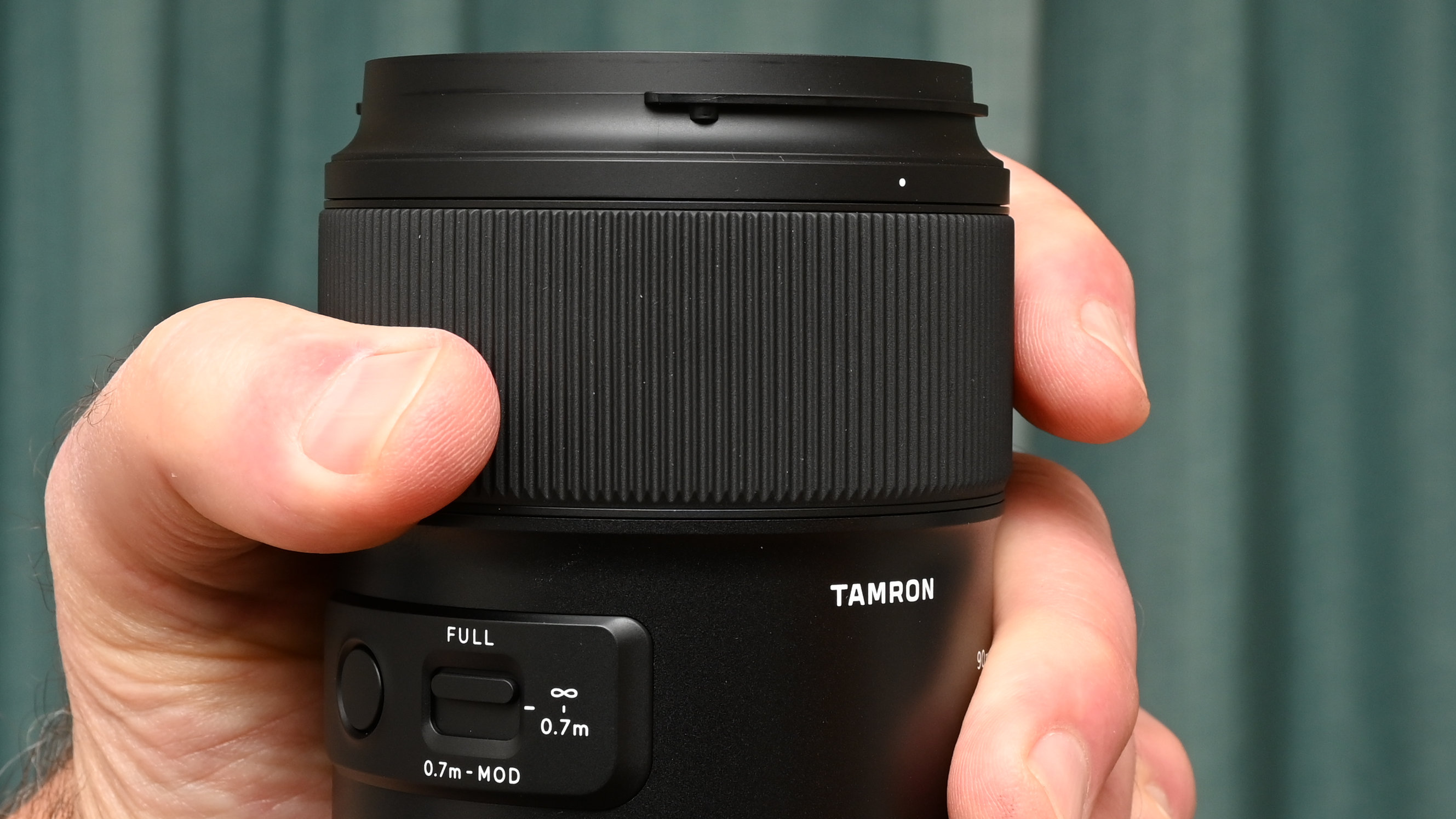
For macro photography, sharpness remains highly impressive not only in the central region of the frame but out to the edges and corners, helped by the ‘flat field’ nature of the lens. Also important for macro shooting, excellent sharpness is maintained at narrow apertures. The narrowest available aperture is f/16, which some might feel is a little lacking compared with the f/22 or f/32 of some macro lenses, which gives a slightly greater depth of field for macro photography. The flipside is that at very narrow apertures, diffraction tends to impair sharpness, so I’m personally happy with the limit being set at f/16.
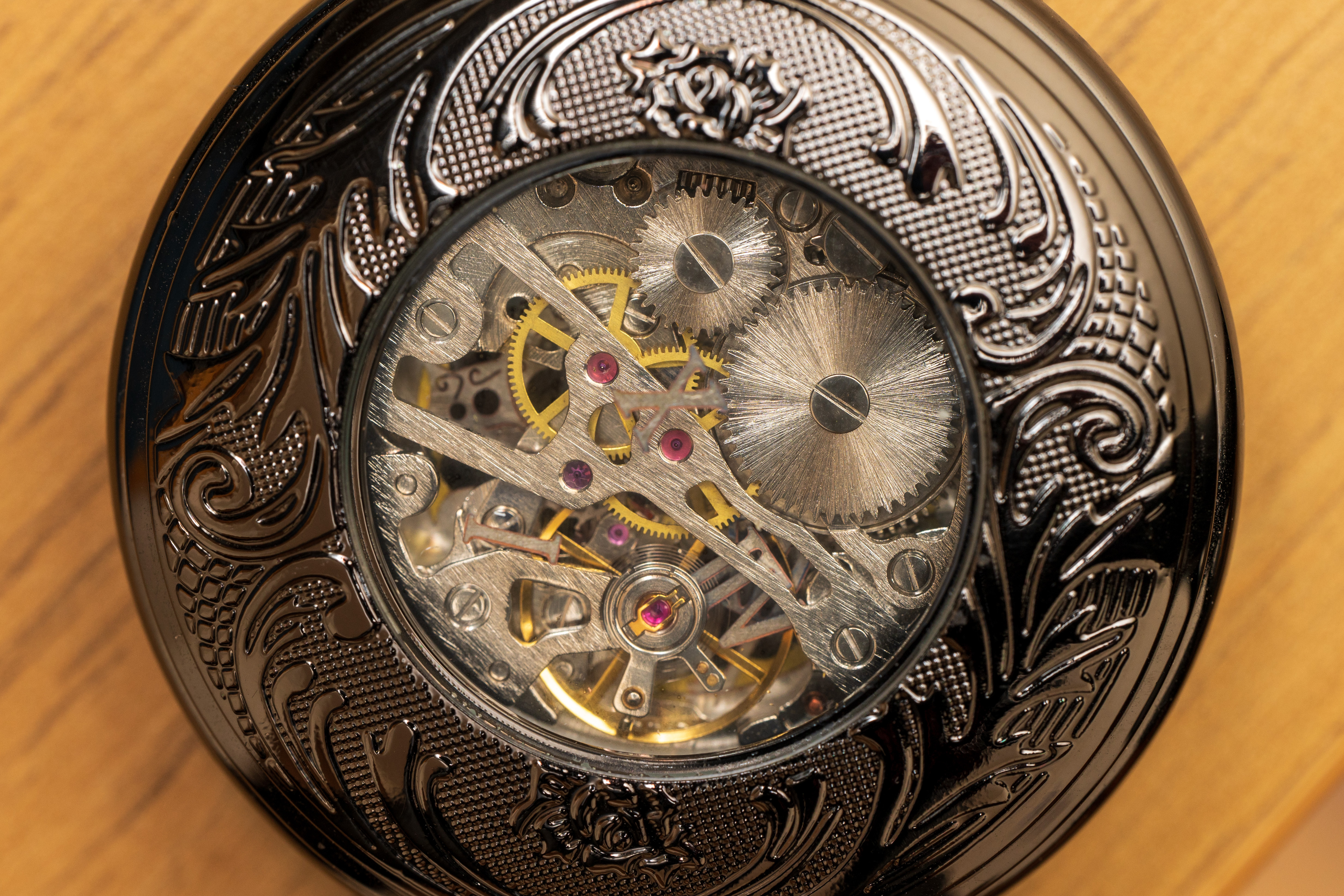
Clarity and color rendition are also excellent. Bokeh is another strong point of the lens, which is soft and dreamy when shooting wide-open at f/2.8. The particularly well-rounded 12-blade aperture diaphragm helps to retain the quality of bokeh when stopping down a little, with nicely rounded bokeh disks formed from defocused lights or bright spots. The 12-blade aperture also works well for producing a starburst effect from bright lights.

For general shooting, the absence of optical stabilization, as featured in Tamron’s previous 90mm macro lens, can be an issue if you’re shooting with Nikon or Sony APS-C format mirrorless cameras that lack IBIS (In-Body Image Stabilization). Keep a steady hand, however, and the lens has a useful 135mm effective focal length on these cameras. You also get an effective 1.5x boost in macro magnifying power. First-generation Sony A7 full-frame cameras also lacked IBIS but, for full macro shooting, even hybrid stabilization is a poor substitute for a tripod or other solid camera support.
Tamron 90mm F2.8 Di III Macro VXD: Sample Images
The following gallery of close-up and full macro example shots were taken with the Tamron lens mounted on a Nikon Z 6II camera body, illuminated by bounced flash from a Godox V860III TTL flashgun.
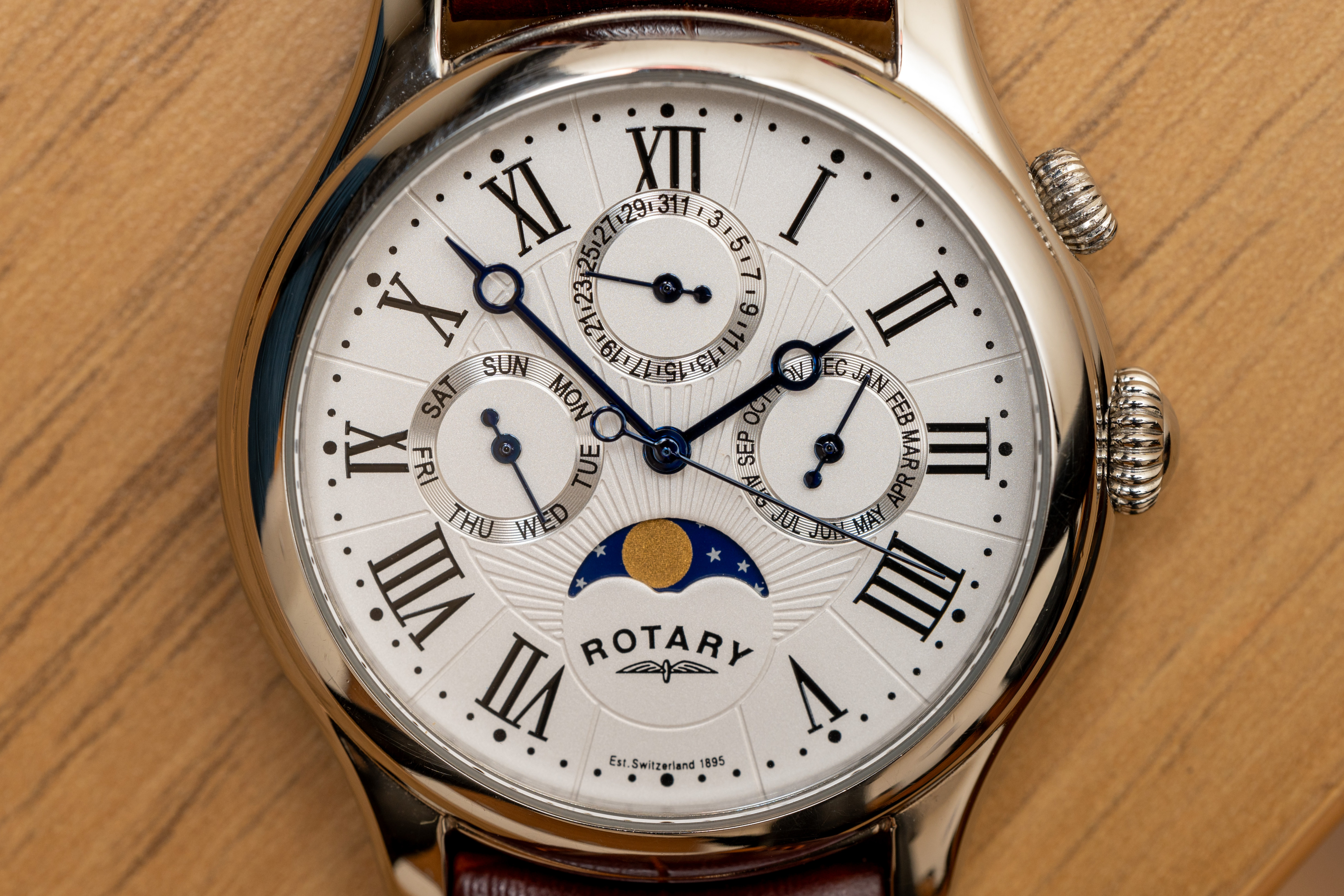


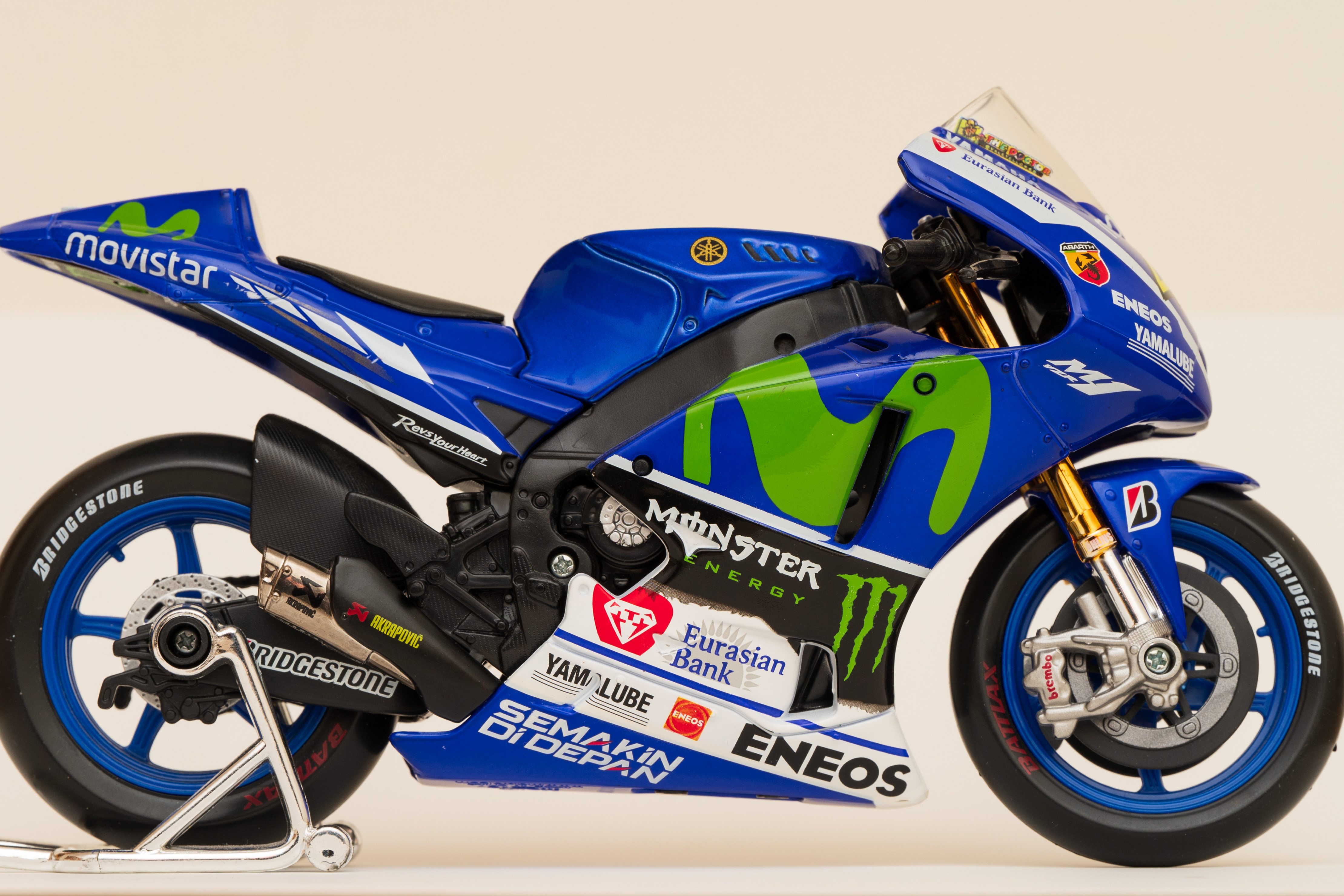

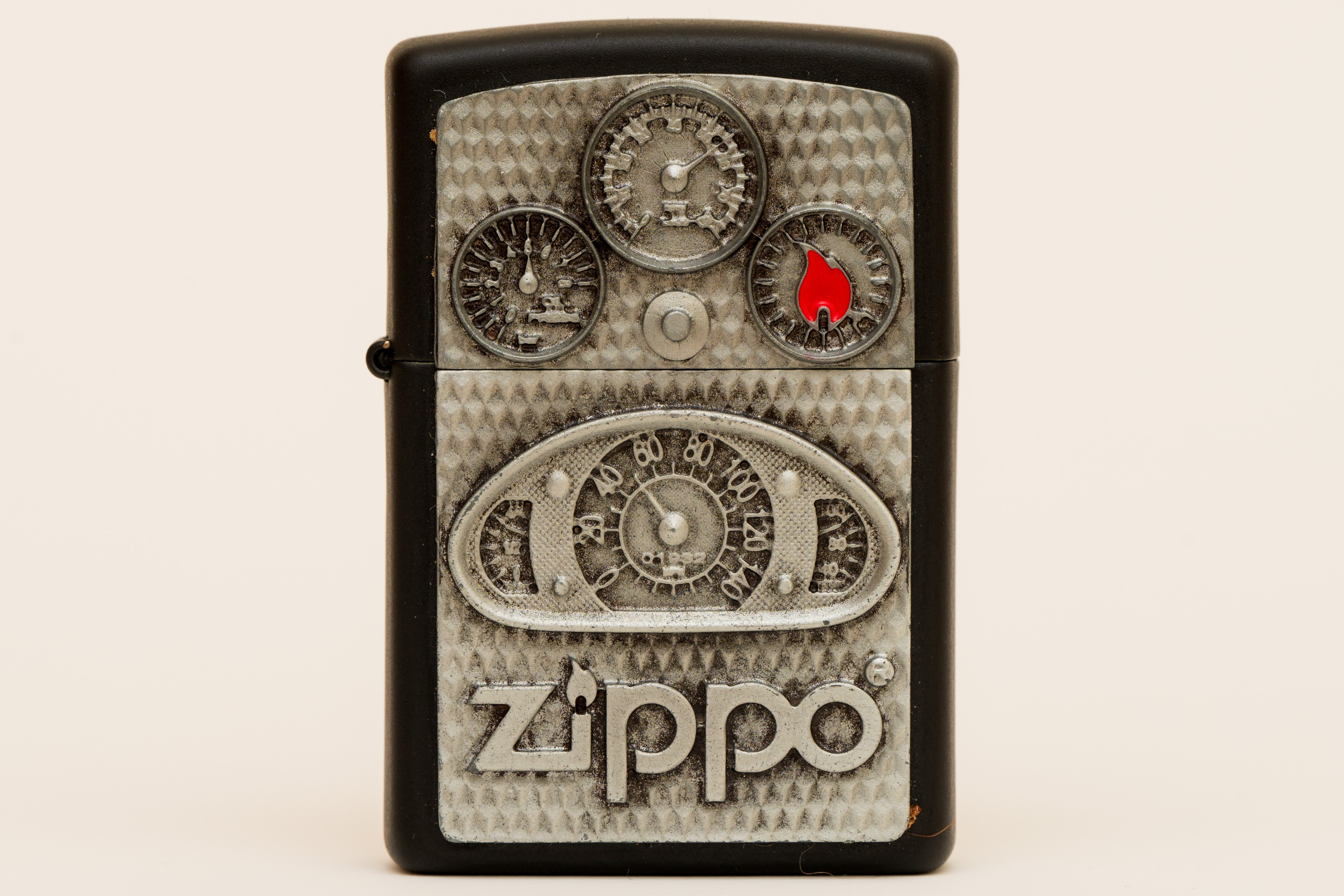
Tamron 90mm F2.8 Di III Macro VXD: Lab Results
We run a range of lab tests under controlled conditions, using the Imatest Master testing suite. Photos of test charts are taken across the range of apertures and zooms (where available), then analyzed for sharpness, distortion and chromatic aberrations.
We use Imatest SFR (spatial frequency response) charts and analysis software to plot lens resolution at the center of the image frame, corners and mid-point distances, across the range of aperture settings and, with zoom lenses, at four different focal lengths. The tests also measure distortion and color fringing (chromatic aberration).
Sharpness:

Center-sharpness is excellent and holds up really well out to the extreme edges and corners of the frame. Levels of sharpness are also very consistent from apertures of f/2.8 through to f/8, and are still impressive even at narrow apertures of f/16 and f/22, often used in macro photography to gain anything more than a tiny amount of depth of field.
Fringing:
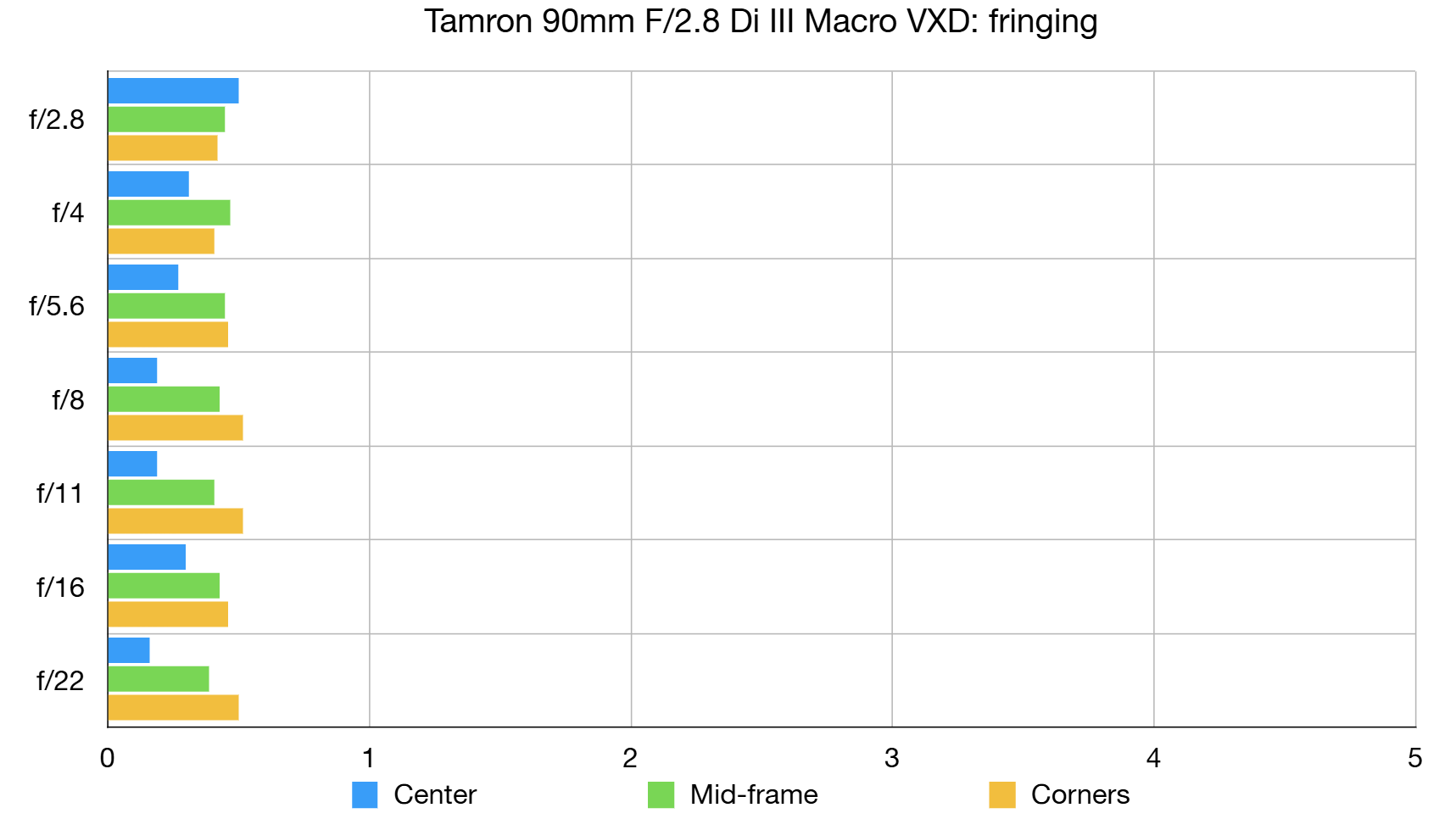
Levels of color fringing are negligible, from the center of the frame right out to the corners, and throughout the aperture range.
Distortion: -0.76
There’s a very small amount of barrel distortion revealed in lab tests but it’s not enough to be noticeable in real-world shooting.
Tamron 90mm F2.8 Di III Macro VXD: Verdict
My love affair with Tamron 90mm macro lenses continues with this new offering for mirrorless Nikon Z and Sony Alpha system cameras. The qualities of previous version are redefined in the new lens, with superb sharpness and clarity for ultra-close-up macro and more general shots alike. Meanwhile, bokeh is soft and smooth, again the quality going up a notch thanks in part to the new very well-rounded 12-blade aperture diaphragm – a first in a Tamron lens. Handling is very refined, build quality is robust and autofocus is both swift and accurate. The lack of optical image stabilization might be a concern for users of some camera bodies and it’s a shame that the lens is only available in two mount options. Overall, however, it's a superb lens at a cost-effective price.
| Features | There’s an autofocus range limiter and function button but no optical stabilizer nor an aperture control ring. | ★★★★ |
| Design | The design features good build quality, weather-seals and great handling characteristics. | ★★★★★ |
| Performance | Image quality is excellent in all respects, and the autofocus system works really well. | ★★★★★ |
| Value | It’s a fair bit less expensive than own-brand Nikon 105mm and Sony 90mm macro lenses. | ★★★★ |
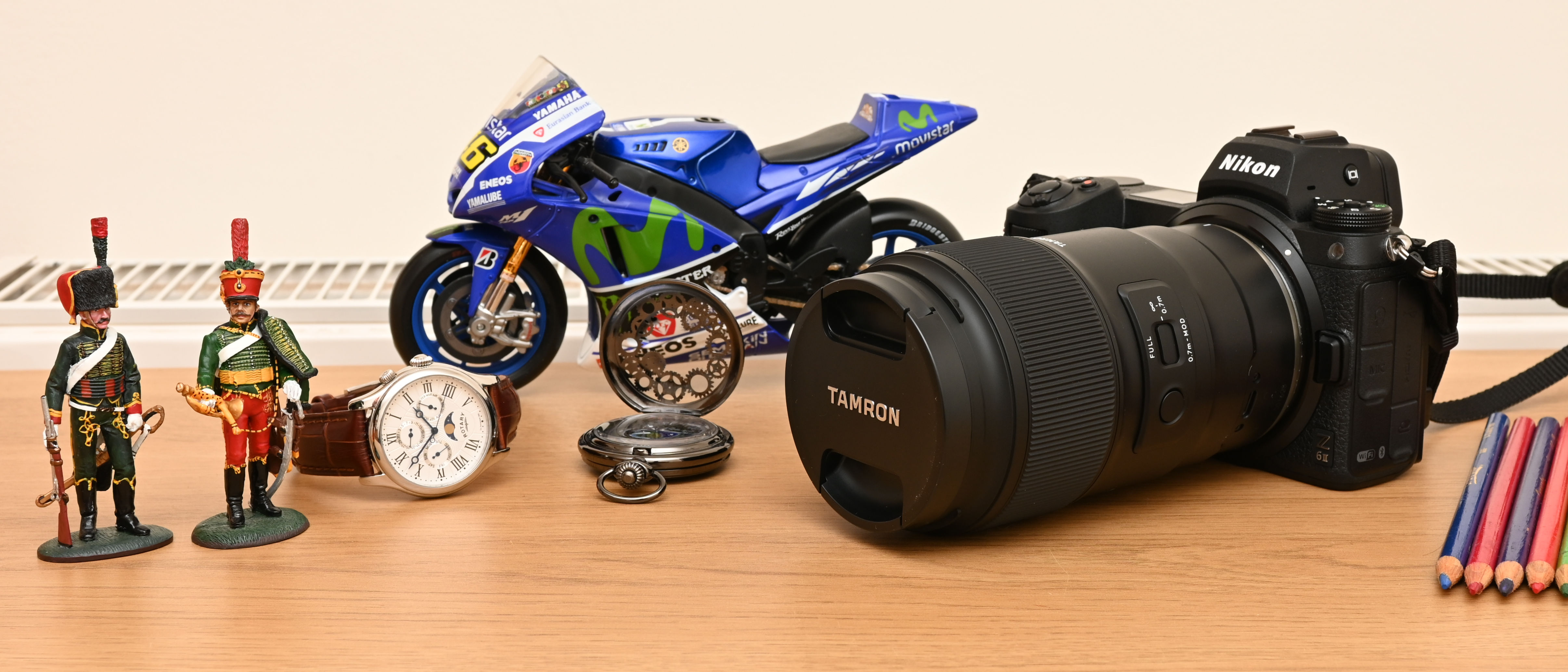
Should you buy the Tamron 90mm F2.8 Di III Macro VXD?
✅ Buy this...
- You want a top-quality autofocus lens for macro photography with your Nikon Z or Sony Alpha mirrorless camera, without paying over the odds.
- You want a macro lens that works equally well for portraiture and other short telephoto applications, with fast autofocus.
🚫 Don't buy this...
- You’d rather have the greater magnifying power of a 2.0x macro lens and don’t mind focusing manually.
- You have an APS-C format mirrorless Nikon Z or Sony Alpha camera that lacks IBIS, in which case the lack of optical image stabilization can be a frustration.
Alternatives
The Nikon Z MC 105mm f/2.8 VR S is an absolutely top-flight macro lens with all the bells and whistles, including an OLED info display. The list price is expensive at $1047/£1049 but, at the time of writing this review, it was heavily discounted at $847/£799.
The Sony FE 90mm f/2.8 Macro G OSS is a firm favorite for Sony Alpha shooters and includes optical stabilization, an autofocus range limiter and a customizable function button. It currently costs $998/£819.
Matthew Richards is a photographer and journalist who has spent years using and reviewing all manner of photo gear. He is Digital Camera World's principal lens reviewer – and has tested more primes and zooms than most people have had hot dinners!
His expertise with equipment doesn’t end there, though. He is also an encyclopedia when it comes to all manner of cameras, camera holsters and bags, flashguns, tripods and heads, printers, papers and inks, and just about anything imaging-related.
In an earlier life he was a broadcast engineer at the BBC, as well as a former editor of PC Guide.

